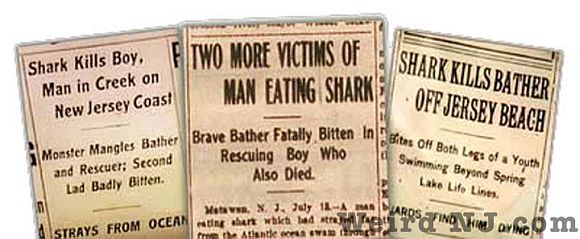
Yesterday was the start of the Discovery Channel’s ever-popular Shark Week. Along the coast of Long Island, NY and the New Jersey Shore, we are well into what could be called “Shark Month” with multiple shark sightings. Since the unofficial start of summer during Memorial Day weekend, beach officials have used drones, helicopters and beach closures to prevent a potentially deadly shark encounter after at least five people have suffered shark bites. Fortunately, none of the attacks have been life-threatening.
Given the shark activity on local beaches, it seems like a good time to look at the horrific shark attacks of one hundred and six years ago this month, when Americans, for the first time, learned to be afraid of sharks. An updated repost.
On the evening of July 1, 1916, Charles Vansant, 25, of Philadelphia was on vacation with his family at the beach-side resort town of Beach Haven on the New Jersey Shore. He decided to go for a swim before dinner. Shortly after he dove into the surf, he was attacked by a large shark and died of loss of blood.
Worse was yet to come. Five days later and 45 miles to the north in the resort town of Spring Lake, New Jersey, Charles Bruder, 27, a Swiss bell captain at a local hotel, was attacked and killed by a shark while swimming. The shark bit him in the abdomen and severed both his legs.
Continue reading →
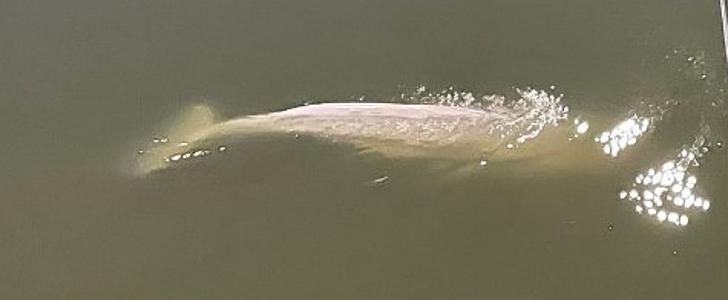

 It has happened again. While sailing in a qualifying race for the upcoming transatlantic solo sailing contest Route du Rhum, 62-year-old French sailor Laurent Camprubi found himself trapped inside his sailboat after it capsized. The keel on his boat, the Jeanne Solo Sailor, sheared off and the boat capsized 14 miles (22 kilometers) from the Sisargas Islands off Spain’s northwestern Galician coast.
It has happened again. While sailing in a qualifying race for the upcoming transatlantic solo sailing contest Route du Rhum, 62-year-old French sailor Laurent Camprubi found himself trapped inside his sailboat after it capsized. The keel on his boat, the Jeanne Solo Sailor, sheared off and the boat capsized 14 miles (22 kilometers) from the Sisargas Islands off Spain’s northwestern Galician coast. After months of controversy, the 417-foot-long, three-masted sailing yacht built for billionaire Jeff Bezos slipped out of the shipyard in Rotterdam under the cover of darkness. At 3AM on Tuesday, the
After months of controversy, the 417-foot-long, three-masted sailing yacht built for billionaire Jeff Bezos slipped out of the shipyard in Rotterdam under the cover of darkness. At 3AM on Tuesday, the  Alexander Hamilton suggested in The Federalist Papers that “a few armed vessels, judiciously stationed at the entrances of our ports, might at a small expense be made useful sentinels of the laws.”
Alexander Hamilton suggested in The Federalist Papers that “a few armed vessels, judiciously stationed at the entrances of our ports, might at a small expense be made useful sentinels of the laws.” Climate change is threatening the future of sea turtles. Whereas the gender of most animals is determined at fertilization, the sex of most
Climate change is threatening the future of sea turtles. Whereas the gender of most animals is determined at fertilization, the sex of most 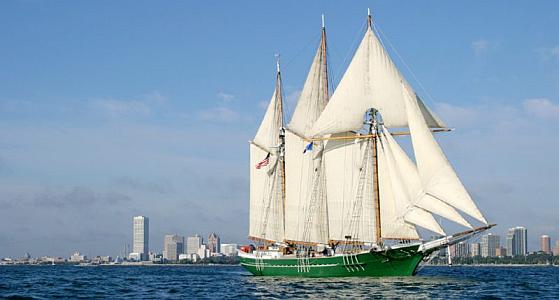 Last April, the
Last April, the 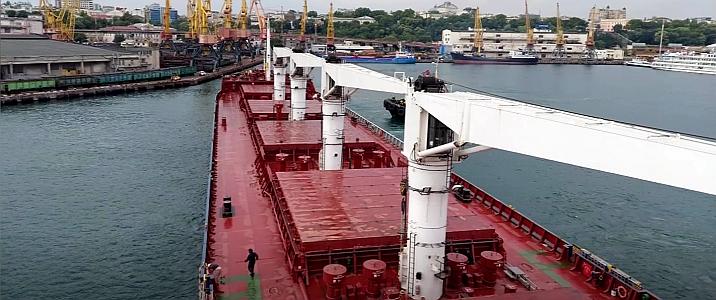 The handysize bulk carrier
The handysize bulk carrier  Two herds of wild ponies have lived for hundreds of years on
Two herds of wild ponies have lived for hundreds of years on 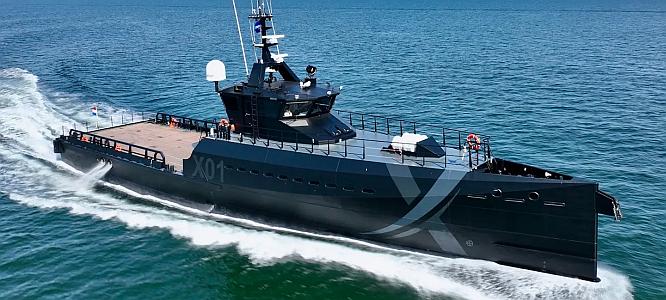 NavyX’s new maritime sandbox, XV Patrick Blacket, was christened today in Portsmouth, UK with the help of a robotic dog.
NavyX’s new maritime sandbox, XV Patrick Blacket, was christened today in Portsmouth, UK with the help of a robotic dog.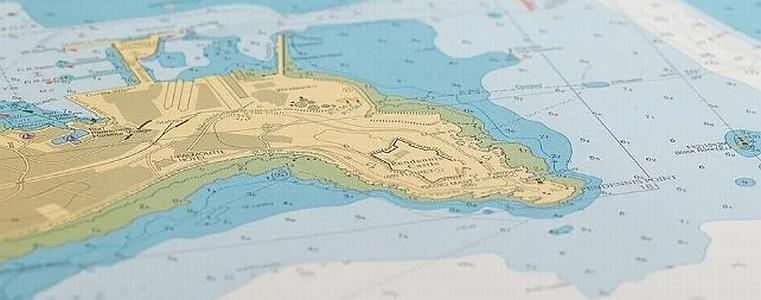 In 2019, the US National Oceanic and Atmospheric Administration (NOAA ) announced that it was
In 2019, the US National Oceanic and Atmospheric Administration (NOAA ) announced that it was 
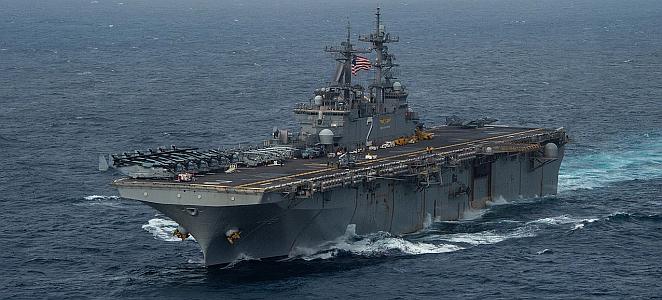 The
The  The 18′ foiling catamaran seen recently flying over the waves off the coast of Essex in the UK, was a small boat testing a very big concept. As it flew during the two-hour sea trial, the boat drove an underwater turbine that generated electricity which then used electrolysis to split seawater into hydrogen and oxygen.
The 18′ foiling catamaran seen recently flying over the waves off the coast of Essex in the UK, was a small boat testing a very big concept. As it flew during the two-hour sea trial, the boat drove an underwater turbine that generated electricity which then used electrolysis to split seawater into hydrogen and oxygen. 
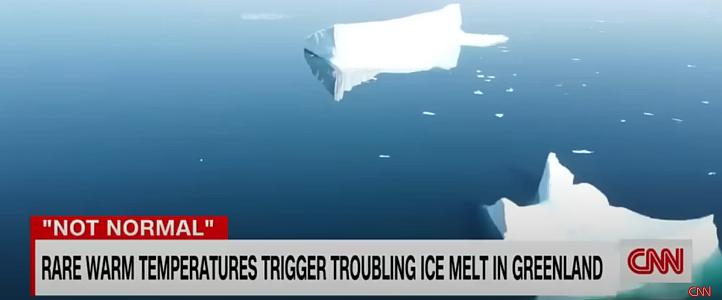 As
As 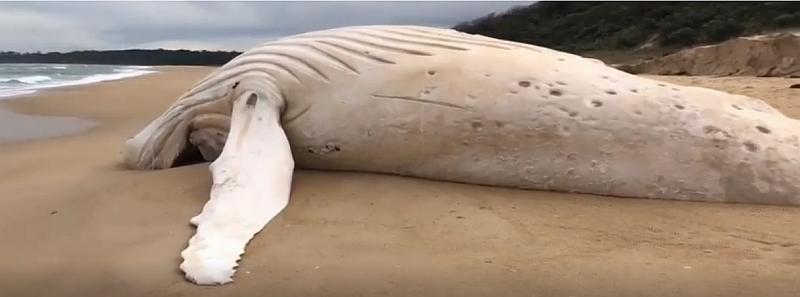 A ten-meter-long white humpback whale carcass recently washed ashore on Australia’s Mallacoota beach raising fears that it could be the world-famous albino humpback nicknamed
A ten-meter-long white humpback whale carcass recently washed ashore on Australia’s Mallacoota beach raising fears that it could be the world-famous albino humpback nicknamed  In July 2020 an
In July 2020 an 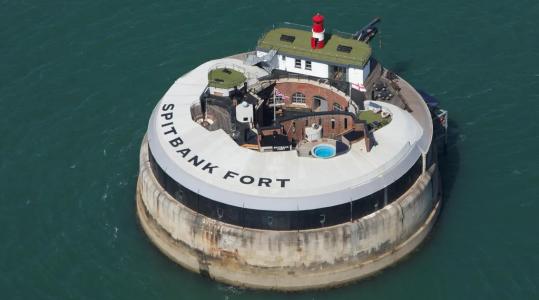 Interested in social distancing? Looking for a unique residence or hotel venue, preferably one with serious armor plating? Do you also have a substantial cache of cash? If so, there are at least two UK sea forts on the market that may meet your needs.
Interested in social distancing? Looking for a unique residence or hotel venue, preferably one with serious armor plating? Do you also have a substantial cache of cash? If so, there are at least two UK sea forts on the market that may meet your needs.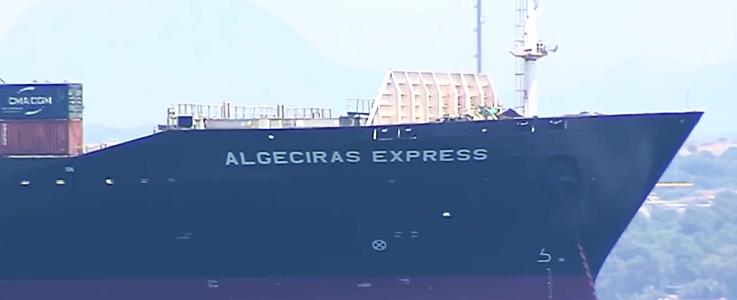 The first officer of the 4,250 TEU container ship
The first officer of the 4,250 TEU container ship